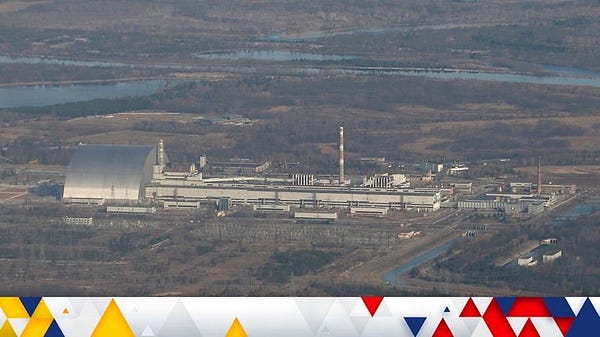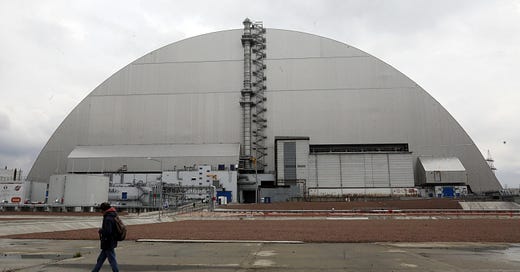Updated:Power Cut To Chernobyl - Possibility Of Spent Fuel Fire And Release Of Radiation
Chernobyl Spent Fuel Rods Should Be Fine
This is a developing situation. We will update our coverage as new information comes in.
(Update:
Russian sources have reported that power has been restored to Chernobyl.

Other sources who spoke to AND Magazine have also indicated that even without power – as long as the spent fuel rods remained covered with water –there should be no danger. The rods are old enough that they are no longer generating sufficient heat to require the water to be circulated. If the pools remain intact and the rods covered, the danger of a spent fuel fire is minimal.)
The Chernobyl nuclear power plant in Ukraine has lost external power. Emergency diesel generators are providing power to critical safety systems at the Chernobyl nuclear site, but there is apparently only enough fuel on-site to run the generators for 48 hours. After that, the plant will be completely dark. There are real concerns about the possibility of a release of dangerous radiation from spent fuel rods stored on site.
Chernobyl is the site of a 1986 accident in which a steam explosion fire resulted in the release of radiation. The damaged reactor was eventually covered with a concrete sarcophagus. After that disaster, several other reactors on site continued to function for years, but they have all been shut down for years. The reactors themselves are therefore largely not a concern.
The spent fuel rods are another matter. Spent fuel rods are removed from nuclear reactors periodically. They are then typically stored in spent fuel rod pools covered by water and continuously cooled.
There are 20,000 spent fuel rods stored at Chernobyl. They produce heat. Ordinarily, pumps circulate water through each spent-fuel pool to carry the heat away. If pumps fail and water evaporates the fuel rods can become exposed to the air. As the heat builds the water will boil further driving evaporation and feeding the cycle.


If the water level drops enough to expose the fuel rods to the air, they can get hot enough for the fuel rods to catch fire potentially releasing radioactive gases and particles into the environment.
The radioactive release from burning fuel is considered the worst possible nuclear accident scenario and would result in great harm to the immediate community and those downwind and downstream. Consequences depend on the weather. Which way is the prevailing wind blowing? Will precipitation wash particles from the air and deposit them in particular areas?
A simulation by the U.S. Nuclear Regulatory Commission highlights just how serious this threat is. The NRC modeled what would happen if there were a fire in the spent fuel storage facility at the Peach Bottom nuclear power plant in Pennsylvania. The report found that an estimated 3.46 million people would have to be evacuated from their homes.
Princeton scientists reviewing the NRC report found it – in their opinion – too optimistic. They modeled the same event and found that the radioactive plume would sweep over Philadelphia, Pennsylvania, and nearby cities. An estimated 18.1 million people would have to be relocated.


On average, spent fuel ponds hold five to 10 times more long-lived radioactivity than a reactor core. Of particular concern is Cesium-137. Cesium-137 has a half-life of 30 years. It produces highly penetrating radiation. It kills you, and it kills you quickly. It is also absorbed into the food chain.
According to the NRC, 100% of the Cesium-137 in spent fuel rods will be released in a fire. A single spent fuel pond holds more Cesium-137 than was released by all the nuclear weapons tests in the Northern Hemisphere that ever occurred.
At this point, there appears to be sufficient time to restore power and keep the fuel rods covered with water and cooled. That assumes, of course, that in the middle of a war prompt action can be taken to control the situation. That may prove easier said than done.






The fuel has been submerged for 20 years. Even without cooling it will take a month or more to reduce the fuel pool level sufficiently to cause major problems.